Introduction
Front
{{section_header}}{{section.name}}{{/section_header}}
The front of the display is dominated by the plasma panel itself, although there are a small set of touch controls along the left side of the bottom of the display. Samsung has done much this year to shrink the size of the bezel, which they claim means that they can add an inch to the size of the display panel without increasing the size of the overall display. This certainly seems to be the case: the PN64D8000 has a significantly smaller bezel than other displays we have looked at, and the glass edge definitely helps the overall design of the product.
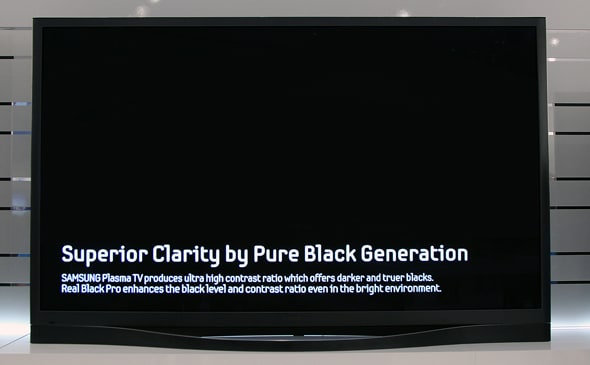
Back
{{section_header}}{{section.name}}{{/section_header}}
We were not able to get a close look at the back of this display, but the glimpse that we did get showed a clean design, with panels covering the ports and sockets.
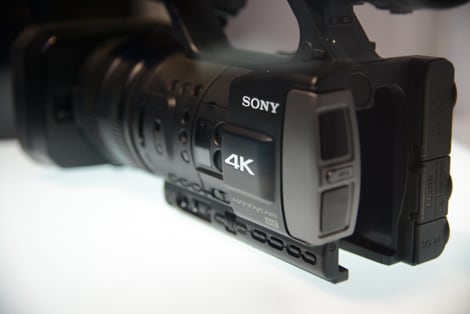
Sides
{{section_header}}{{section.name}}{{/section_header}}
The PN64D8000 is a pretty thin display for a plasma: at just 1.5 inches thick, it is one of the thinner models out there.
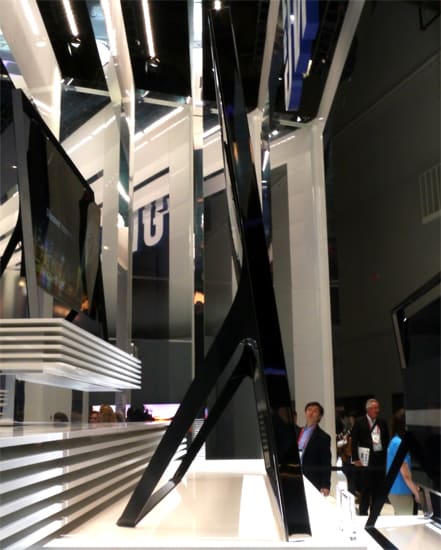
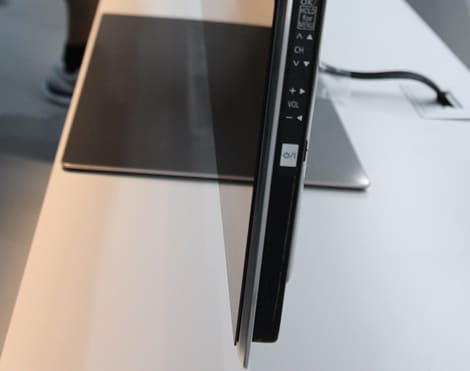
Stand/Mount
{{section_header}}{{section.name}}{{/section_header}}
The PN64D8000 shares the same X-shaped stand as the higher end LCD models. This certainly helps the overall stylish look of the display.
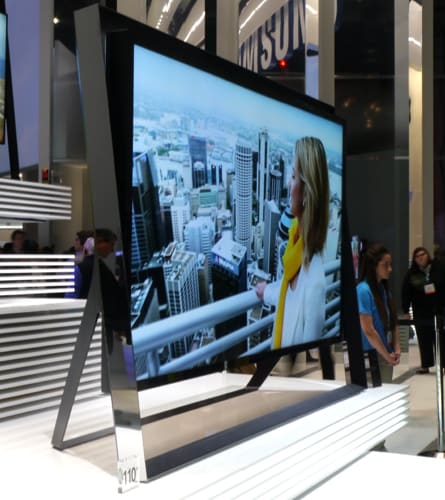
Aesthetics
{{section_header}}{{section.name}}{{/section_header}}
The PN64D8000 has a very clean, simple look that should blend into most decors. Around the bezel edge is a strip of glass, which helps to soften the edge and allow it to blend in by picking up the ambient colors of the room. We were favorably impressed by the overall look of this display, which has a clean, attractive design that will dominate without overwhelming the room.

Display Size & Technology
{{section_header}}{{section.name}}{{/section_header}}
The PN64D8000 is built around a 64-inch Full HD plasma panel with a claimed 0.001ms response time. It is capable of displaying 3D images using the active shutter glasses technology that Samsung currently favors. Samsung seems to have done some significant work int eh past year on shrinking the size of this panel: the overall body of the display is much thinner than last years models.

The other models in the PND8000 range use a similar type of display panel.
Formats & Resolution
{{section_header}}{{section.name}}{{/section_header}}
As a Full HD display, the PN64D8000 can receive and display every pixel of a 1080p high definition video signal, the highest resolution signals currently in use.
Brightness, Blacks and Contrast Ratio
{{section_header}}{{section.name}}{{/section_header}}
We were not able to test the specifics, but the models of the PN64D8000 on show at the CES show had dark, deep blacks and bright whites. The latter is a struggle for many plasma displays, and many also have issues balancing the two ends of the contrast ratio range. Samsung also claims that something called a Real Black Filter provides extra clarity in dark and shadow details.
Color
{{section_header}}{{section.name}}{{/section_header}}
We found that the demo footage on show at the CES show had rich, deep colors, but we will reserve final judgment until we can get a final production level unit in for test.
Motion & Refresh Rate
{{section_header}}{{section.name}}{{/section_header}}
Like most high-end plasma displays, the PN64D8000 offers 600Hz sub-field processing, which helps the screen update more regularly. This should not be confused with the 120 or 240Hz motion processing used by LCD screens: the two techniques are very different.
Viewing Angle
{{section_header}}{{section.name}}{{/section_header}}
Plasma displays usually have a very wide angle of view, and the PN64D8000 looks like it does not differ from this general rule: the pre-production displays on show at CES had a wide viewing angle and very few issues with colors shifting and fading at wide angles.
3D Glasses
{{section_header}}{{section.name}}{{/section_header}}
The PN64D8000 is one of the first TVs from Samsung to use a new type of 3D glasses: the SSG-3700SRs. These are the same active shutter glasses that are used by most other displays, but instead of an Infra Red signal, they receive a Bluetooth signal from the television, which is less likely to be interfered with by remote controls for other devices or lights. The glasses also have the battery on the back of the arms, instead of on the front, which makes them feel a little lighter. These glasses also come with a wireless charging system for these batteries.
Samsung defined to clarify if the PN64D8000 would come with the glasses, or how many pairs would be included,
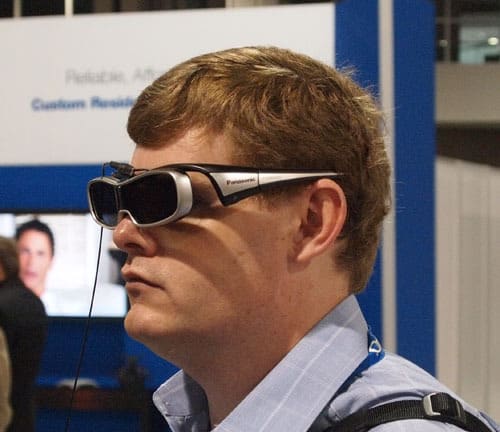
There's no getting around the fact that 3D glasses make you look ridiculous (and possibly feel ridiculous too).
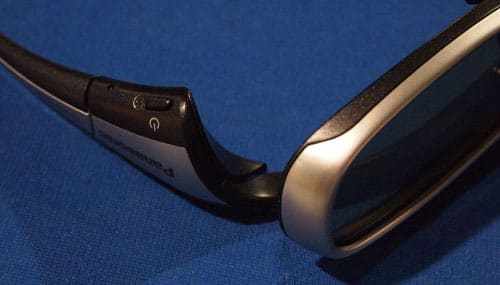
The power button makes the glasses usable for viewing 3D by turning on the active shutter feature.
3D Effect
{{section_header}}{{section.name}}{{/section_header}}
We found the 3D effect of the PN64D8000 to be pretty convincing, but we did still see some very slight evidence of crosstalk, with small traces of the images destined for the left eye showed up in the right and vice versa. We have found plasma displays to have generally lower crosstalk when showing 3D content than LCD-based ones, but we will have to wait to get this model into the lab until we can draw any firm conclusions here.
3D Motion
{{section_header}}{{section.name}}{{/section_header}}
We did find that, in the test footage that Samsung were showing at the CES show, this display produced smooth, natural 3D motion, with only a very occasional glitch. But again, this footage was chosen to highlight the strengths of the display, so we’ll wait to pit it through our own tougher test regimen before we can really rate it.
Audio & Video Ports
{{section_header}}{{section.name}}{{/section_header}}
We were not able to examine the back of the models on display at CES to confirm the number and range of video ports, and Samsung said that the number and layout was still subject to change. However, previous models included a good number and range of ports, and the layout of the back of the samples that we were able to glimpse looked pretty similar, with the ports being located under two removable panels on the back of the display. Previous models included 4 HDMI ports, one component and composite, a VGA input and a collection of digital and analog audio ins and outs. We would expect that the on the PN64D68000 would be unchanged from this, but that remains to be seen.
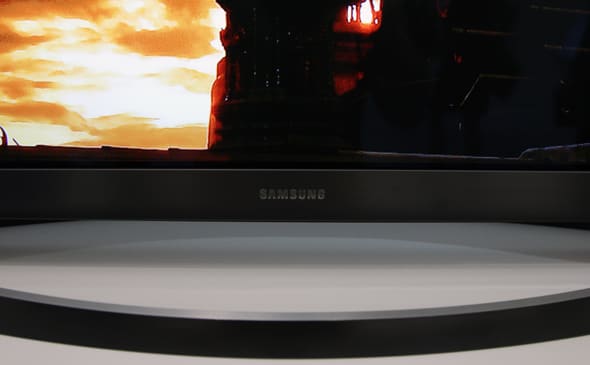
Also included on this display is a WiFi and wired Ethernet connection. This allows it to send and receive data from the Internet as part of wired and wirlesss networks. To keep the profile thin, these ports are angled so that the HDMI and other cables plug in parallel to the front of the screen, and some ports will probably require included adapters to work.
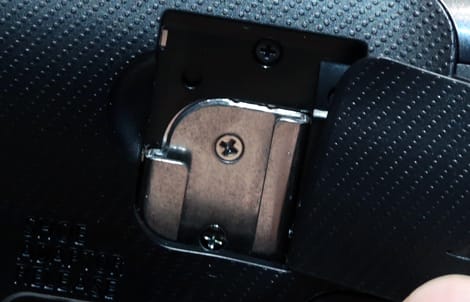
Internet & Other Media
{{section_header}}{{section.name}}{{/section_header}}
here.
The display also comes with a number of apps, and more are available through the Samsung Apps Store, which allows the user to buy and download apps to run on the TV. These apps include ESPN SportsCenter and NBA Game Time, both of which shows sports scores and stats on the screen while other content is being displayed. Samsung is also offering an SDK (Software Developers Kit), which allows programmers to write their own apps, which can be offered and sold through their Apps store.
Placement
{{section_header}}{{section.name}}{{/section_header}}
The placement of the ports under panels on the back of this display is a problem if you want to get to them: you will have to move the display a long way to be able to reach them, or take the display off the wall if it is wall mounted. There is also no side HDMI port, so if you want to frequently plug in a device such as a digital camera or camcorder, you will need to leave the cable in place on the back of the display.
Remote
{{section_header}}{{section.name}}{{/section_header}}
Rather than bundle a standard remote control with this high-end plasma display, Samsung decided to go all-out with a new design: the RMC301D Touch Control is a cellphone sized device with a 3-inch LCD screen. Instead of a slew of buttons, it uses a 3-inch touch screen, with a speaker and microphone. In fact, it looks like an iPhone with the Apple logo removed. so you could be forgiven for picking it up and trying to call someone on it.
The LCD screen and touch control is used to control the TV, allowing you to change channels, set up streaming content or control apps in a more convenient way than the usual remote, as well as offering features like channel and schedule search through an on-screen QWERTY touch keyboard.
This combination of touch screen and TV opens an interesting number of possibilities, including the ability to mirror what is on the TV screen on the remote screen, so you can keep the movie going if you need to step out for a second. This mirroring also includes Internet streaming content, but it wasn’t clear if copy protected content such as Blu-ray discs would work. The Touch Control can also be used as an independent device, browsing the web or watching YouTube videos on the device directly without involving the TV.

Controls
{{section_header}}{{section.name}}{{/section_header}}
side-mounted LCD D8000 model, or the back-mounted controls of the LCD D7000 series. The small labels for the controls don't detract much from the clean design of the display, though. Touch controls can be a pain if they are overly sensitive, but we were not able to test this on the pre-production unit on show.
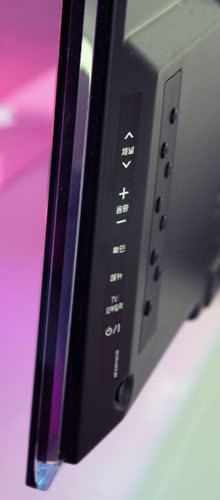
Menu
{{section_header}}{{section.name}}{{/section_header}}
We were not able to get into the on-screen menu to see if Smasung has redesigned their menus alongside the physical changes to this display.
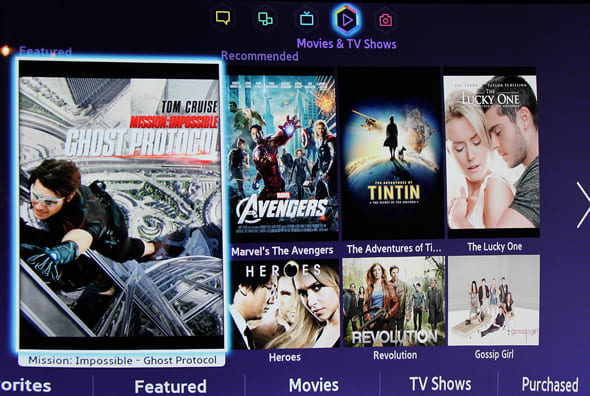
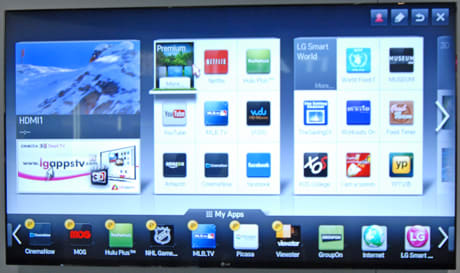
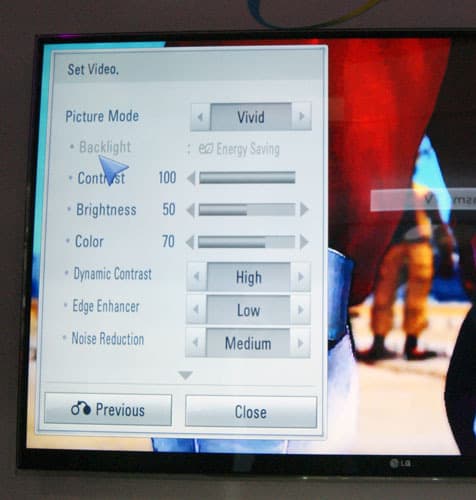
Conclusion
{{product.vanity}}
The PN64D8000 is the top of the line for Samsung in 2011 as far as Plasma HDTVs go. Their LCD lines has been their main focus recently, but their plasma lineup still remains an attractive alternative, providing a lot of performance and a feature set to match. The PN64D8000 has a similar set of features to the LCD D8000 series, offering a huge range of internet streaming and content features, internet apps and 3D playback. This is also one of the first displays that will support Samsung's new 3D glasses, which are controlled over a Bluetooth connection rather than an Infra Red signal. This should make them less prone to interference.
No pricing has yet been set for the PN64D8000, although we expect that it will be a premium model with a premium price point. Samsung has also not yet announced a release date beyond saying that the product will be available in the first half of 2011.
Series Comparision
{{product.manufacturer_specs['Series Name']}} Series
Specs
{{manufacturer_specs_table}}
Meet the tester
Richard Baguley is a veteran writer who has written about technology ranging from Alphabet to Zip file utilities. He has contributed to pretty much every major tech publication, including Amiga Format Magazine, PC World, Wired, CNET, Toms Guide, Forbes, and many others. He lives in the Boston metro area with his wife, dog, and an indeterminate number of cats.
Checking our work.
Our team is here for one purpose: to help you buy the best stuff and love what you own. Our writers, editors, and lab technicians obsess over the products we cover to make sure you're confident and satisfied. Have a different opinion about something we recommend? Email us and we'll compare notes.
Shoot us an email
